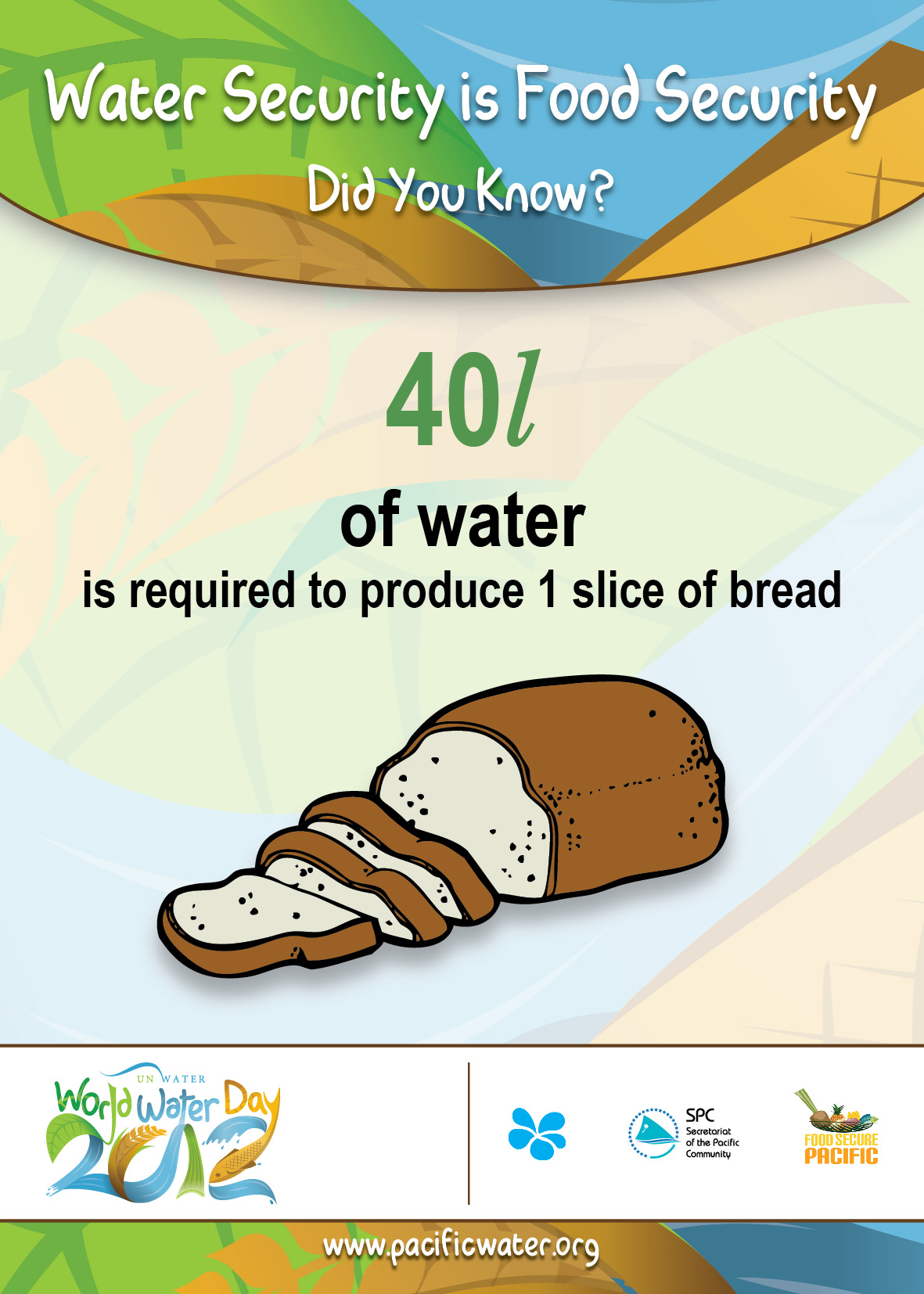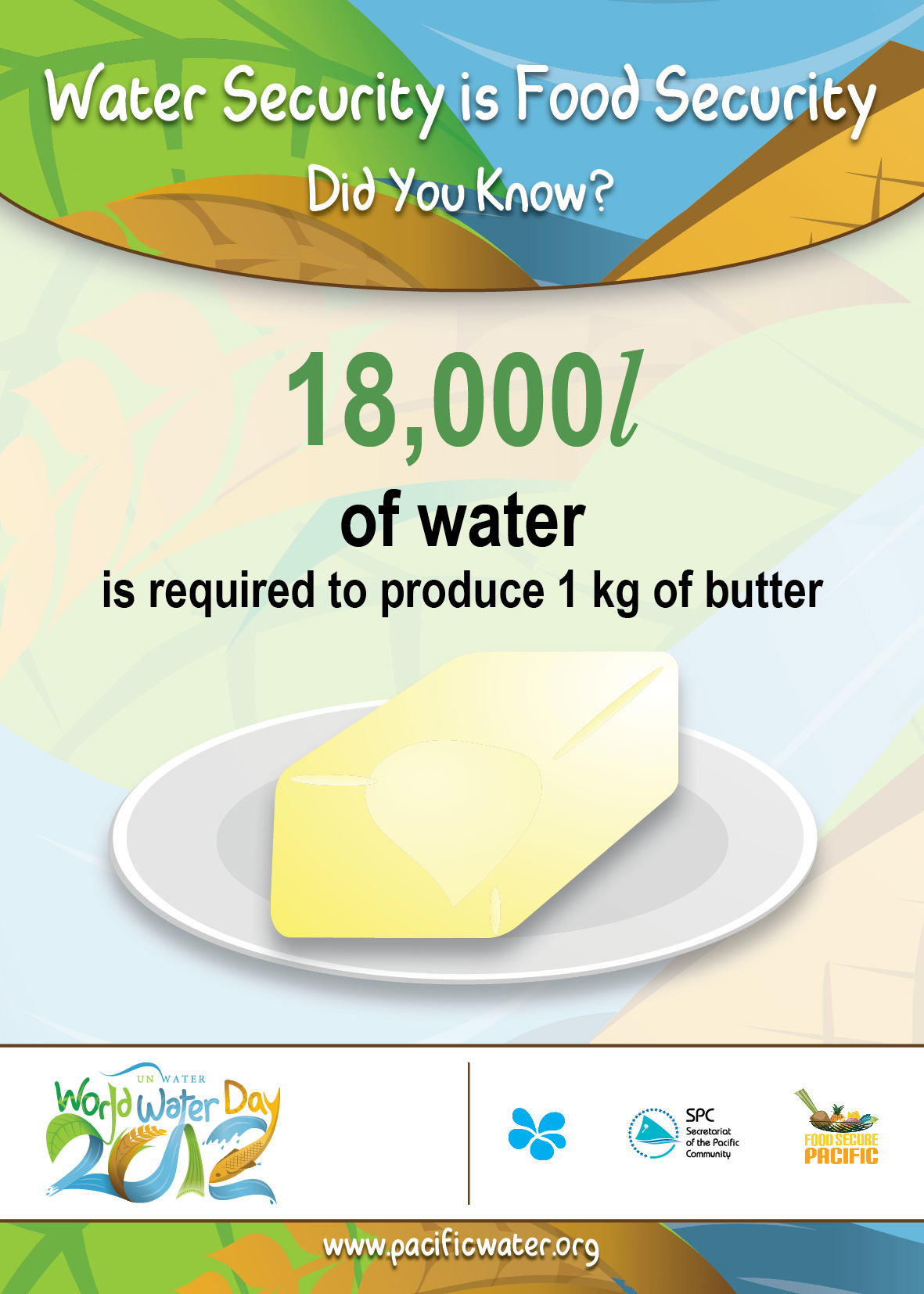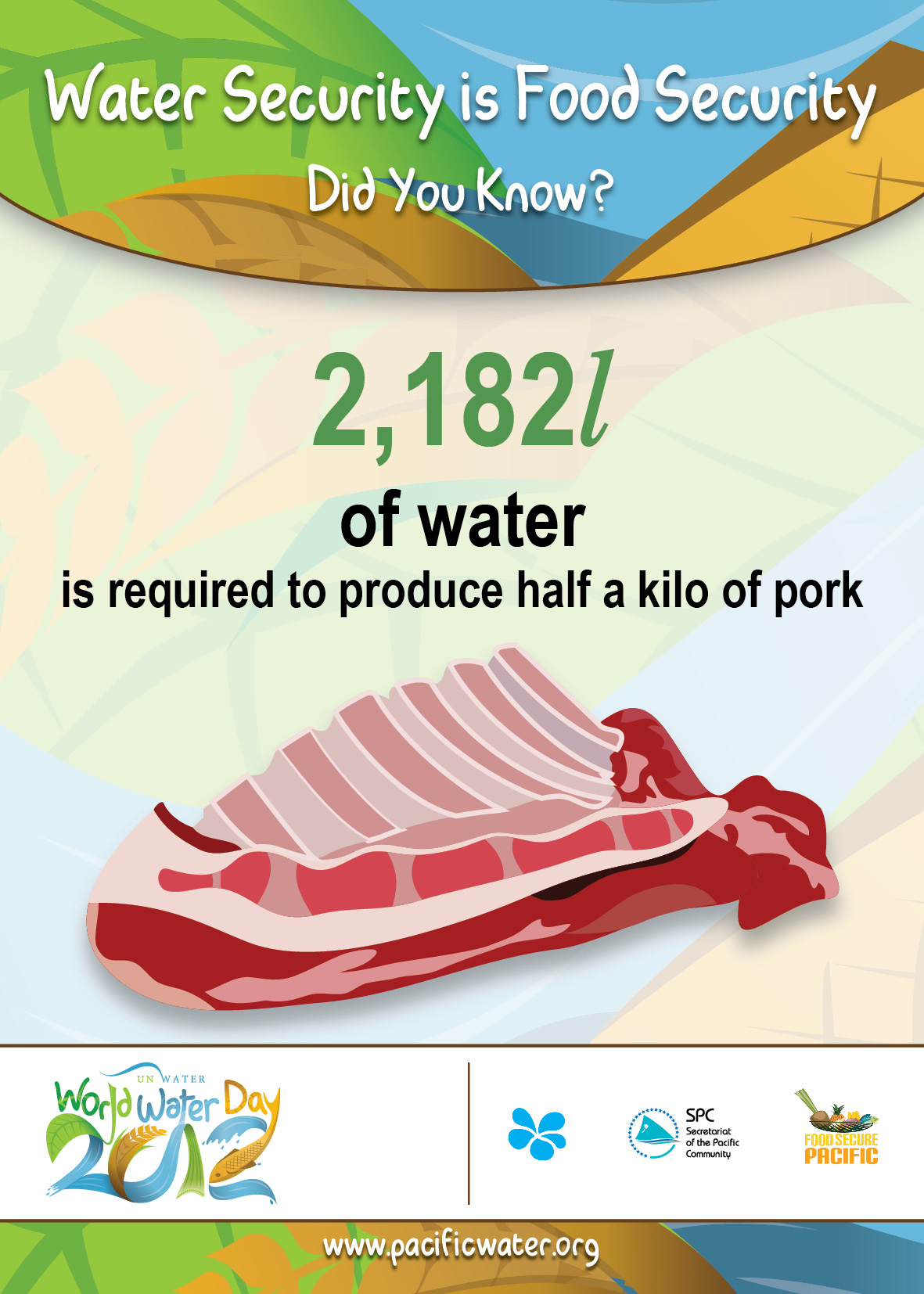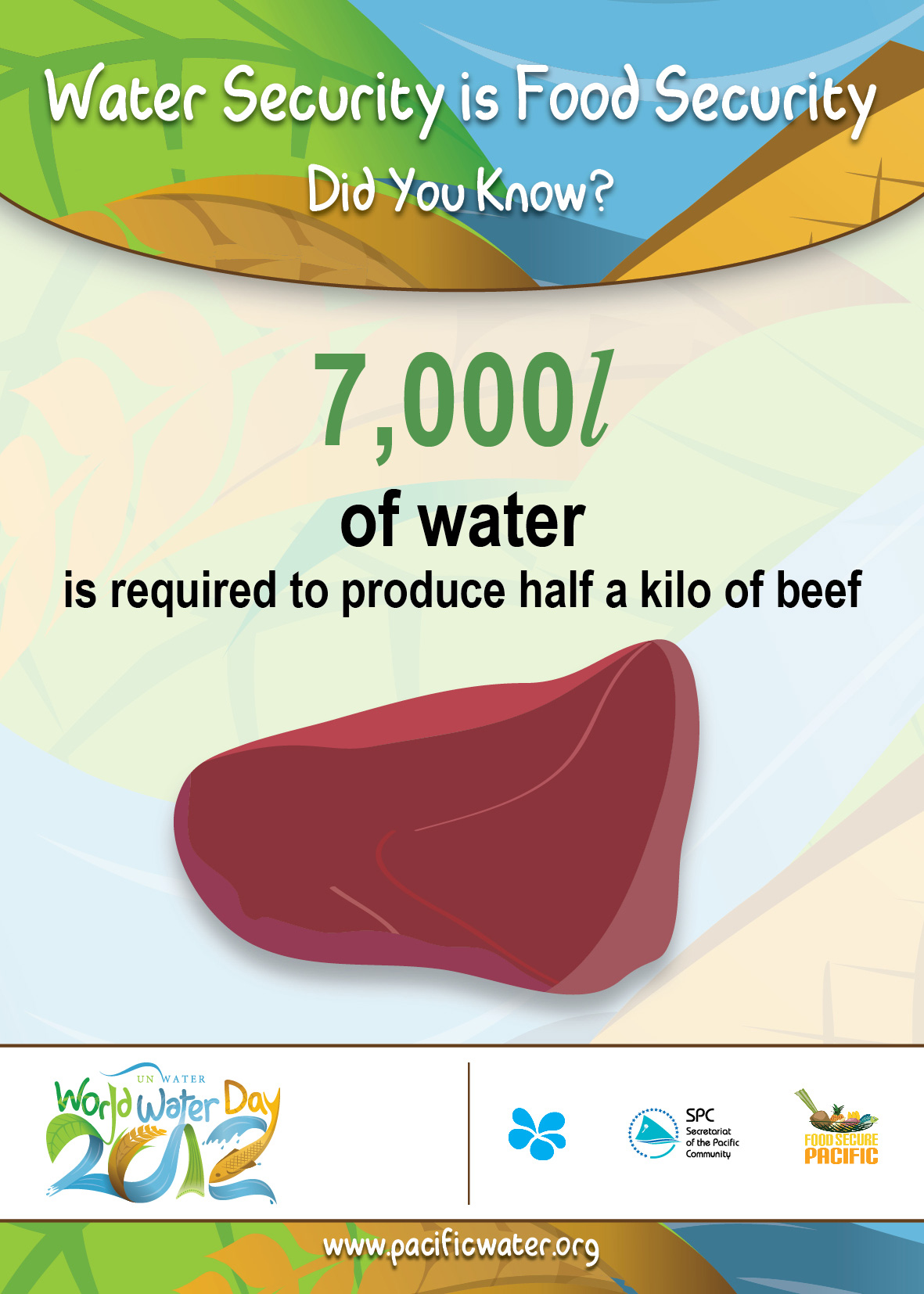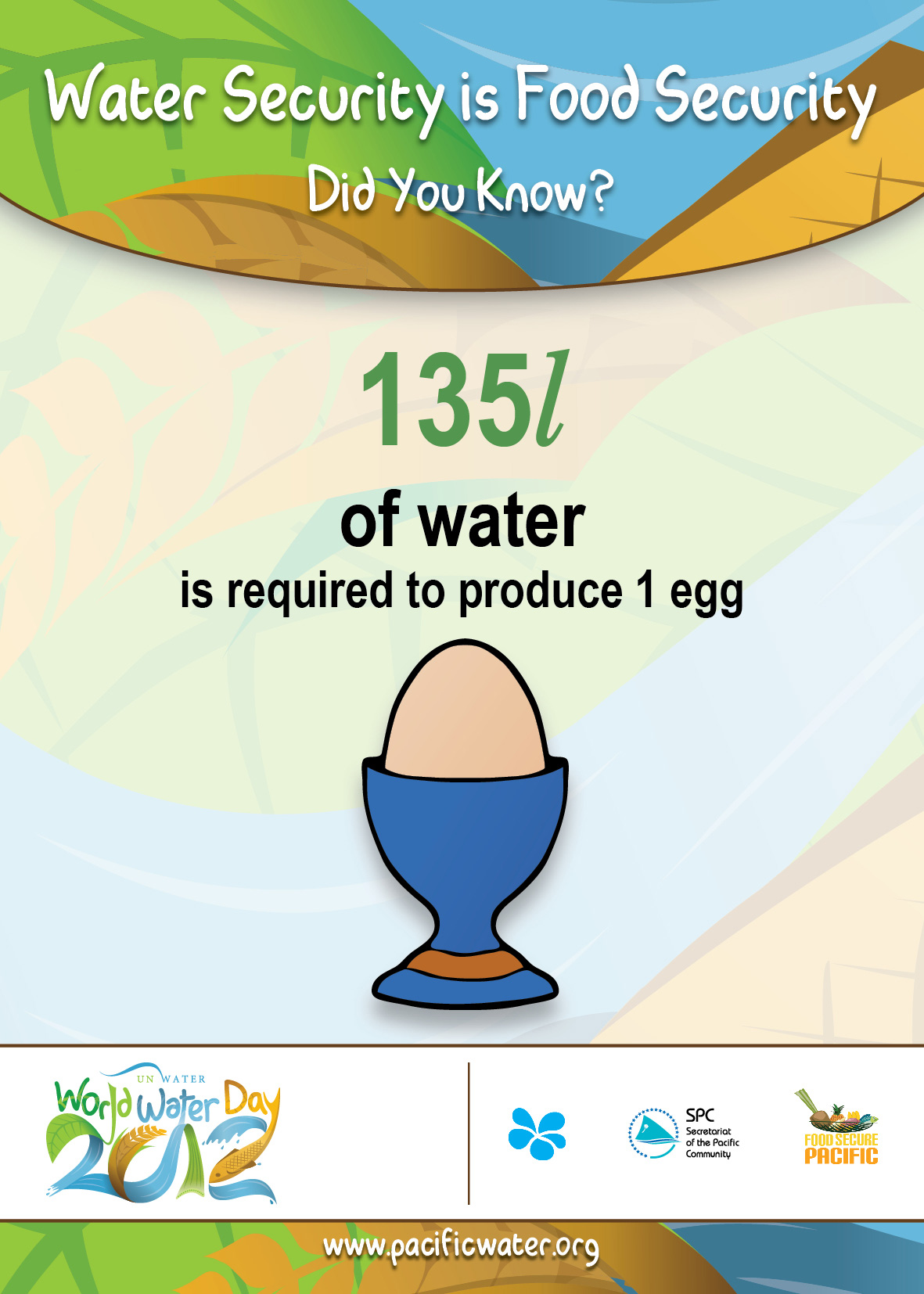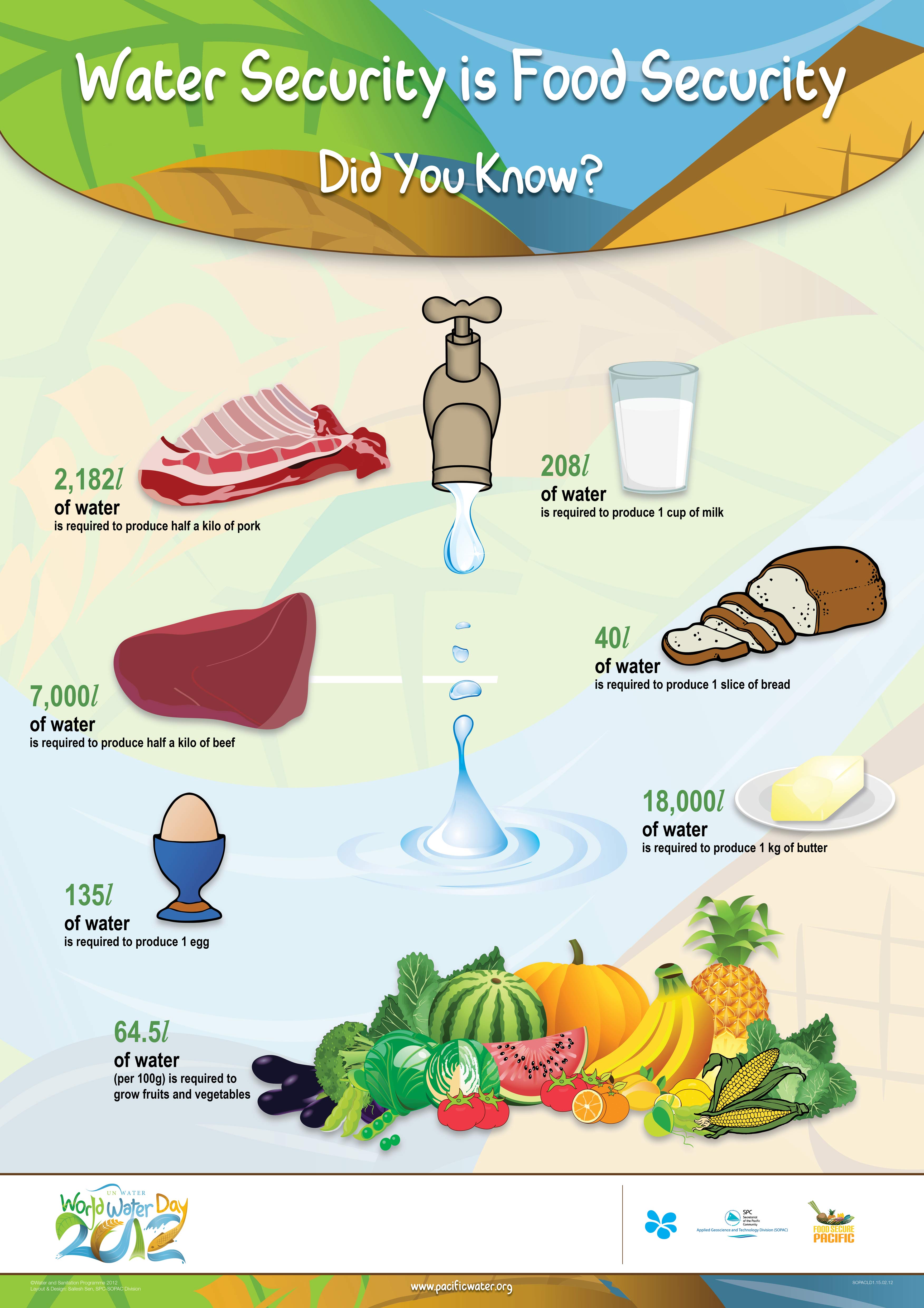
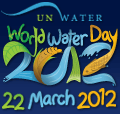

|
World Water Day 2012

World Water Day also referred to, as ‘World Day for Water’ is a regionally and globally recognised annual event to help focus on water, its development and conservation and implementation of recommendations of Agenda 21. World Water Day is traditionally observed on 22nd March each year.
The global theme for World Water Day 2012 is: "Water and Food Security"- The World is thirsty because we are hungry.
The pacific theme for World Water Day 2012 is: "Water Security is Food Security"
The Applied Geoscience and Technology Division (SOPAC) of the Secretariat of the Pacific Community (SPC) will take an active role in the planned 2012 activities for the celebration for world water day. The activities for example in Fiji is maked by a week long event with Government ministries and the Global Environment Facility (GEF) Demonstration Project. This is also in tandem with a regional campaign through 22 Pacific Island Countries who will all receive regional IEC materials for their respective campaigns and celebrations
The Pacific has in place Towards a Food Secure Pacific; Framework for Action on Food Security in the Pacific. The framework is intended as a regional and national policy guide, the plan guides countries in determining relevant specific country level activity. The 2012 celebrations will highlight the relationship between securing water resources and food security for the future of the pacific. The Framework for Action is being spearheaded by SPC and also is an instrumental component of the Pacific Plan for strengthening regional cooperation and integration.
The SPC/SOPAC Programme has coordinated World Water Day Campaigns with a regional focus by providing country support to awareness raising events, various activities and celebrations around the pacific. This year will be marked by the provision of press release material and WWD 2012 materials such as bags, posters, and stickers.
These awareness materials were produced by identifying 2 key areas; (i)Food production and the amount of water used to produce various food products
and (ii) Water management/land use management as it relates to securing safe, abundant, food for island communities.
The following is a collection of the regional awareness materials that have been prepared for our partners in the Pacific region who will mark WWD 2012.
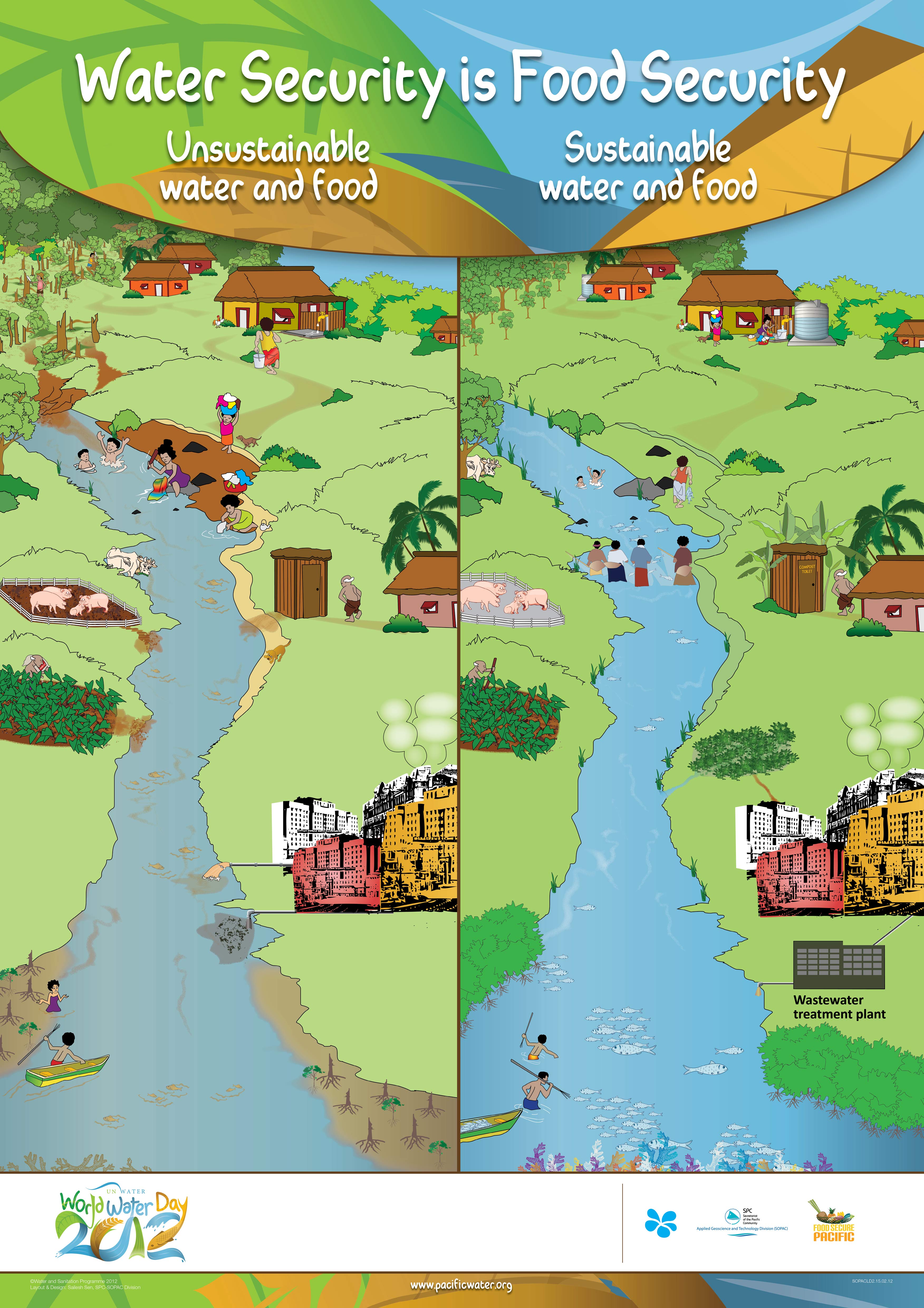
|



|
Catalogue of Rivers for Pacific Islands released
First ever Catalogue of Rivers for Pacific Islands
For the first time a selection of river characteristics from across the Pacific can be found in one book the Catalogue of Rivers for Pacific Islands. The book documents the main features and characteristics of the rivers in eight Pacific Island Countries and the available data associated with them.
Rivers in the Pacific Islands are generally very dynamic. The distances from their sources to the ocean are often short. The consequent short travel times allow waters to rise and fall quickly in response to rainfall. This was seen with devastating effect during the recent flooding in Nadi, Fiji in late March.
Avinash Tyagi, Director of Climate and Water at the World Meteorological Organisation (WMO) said that the book provided for the first time, an important hydrological foundation by reviewing the available data sets and compiling them into a consistent style and format.
“I firmly believe that it will be a valuable and sought after source of information for a range of users,” Mr Tyagi said.
Rivers are not found in all countries in the Pacific and are generally confined to those islands which have the right sort of geology being generally larger and more elevated. Islands that are fortunate to have permanent rivers, rely on them greatly for water supplies, agriculture and fishing, transportation, power generation as well as recreation. They are an integral part of the environment and are valued by all.
Peter Sinclair, Water Resources Advisor at the Secretariat of the Pacific Community’s Applied Geoscience and Technology Division (SPC SOPAC), said that the book was a valuable first step at understanding the dynamics of island rivers but more study and data was needed to ensure rivers could keep up with increasing demand from growing populations and economies.
“The small size of many Pacific islands means that water resources are limited. Growing populations, increased demand from numerous industries, and increased climate variability is adding pressure to water resources,” Mr Sinclair said. “All Pacific island countries need easily accessible, relevant, and reliable information to guide the development of their future water needs.”
The Catalogue of Rivers for Pacific Islands raises the need for improved and consistent hydrological data capture and management. Current data sets are often patchy, highlighting the difficulties that countries face in maintaining consistent and long term data sets.
“These data sets are important for future economic development as well as the long term protection of the highly valued natural environments,” Mr Sinclair said. “More needs to be done to increase the technical and human resource capacity of the Pacific to collect, maintain and distribute hydrological data.”
The Catalogue of Rivers for Pacific Islands was made possible through the support of the United Nations Educational, Scientific and Cultural Organization’s (UNESCO) International Hydrology Program. Additional support came from the European Union and SPC SOPAC.
|







